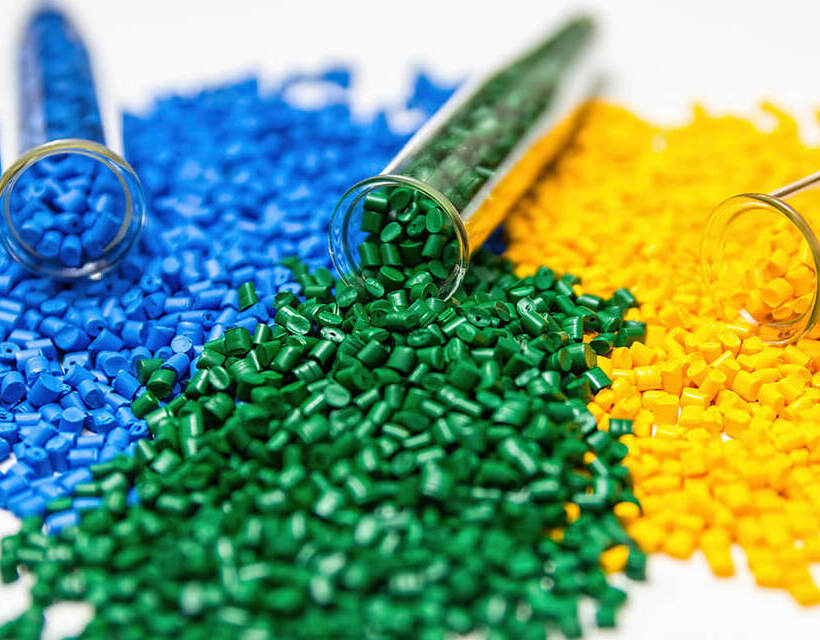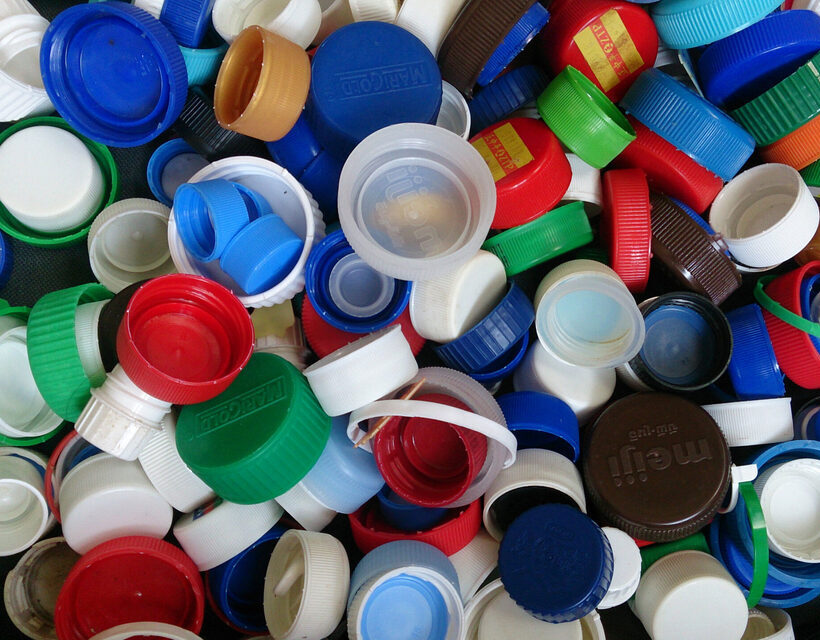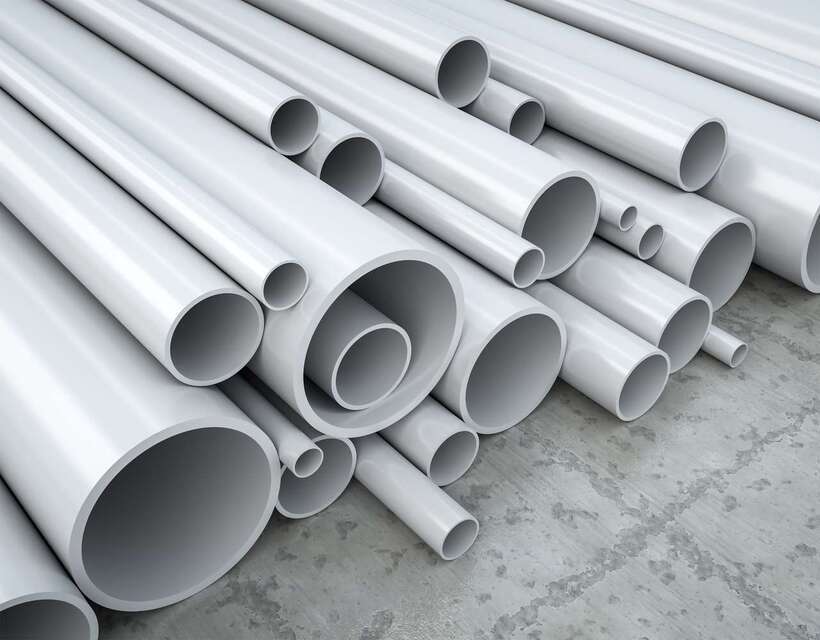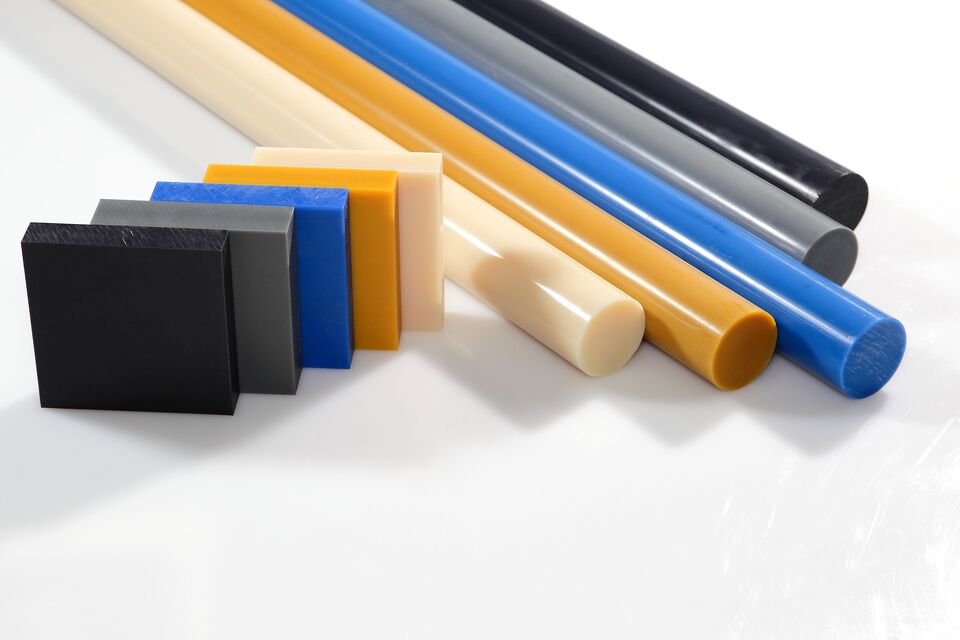Engineering plastics are an essential part of the modern world. From automotive parts to medical devices, engineering plastics are used in many industries due to their versatility, durability and cost effectiveness.
In this article, we'll define engineering plastics and discuss their properties, types, advantages, environmental impact, recycling, innovation and future.
So, if you're looking to learn more about engineering plastics, you've come to the right place. Let's get started!
Overview of Engineering Plastics

You're about to learn something new and exciting - get ready to be amazed! Engineering Plastics is a type of material used to make components and products in a variety of industries. The materials are produced using a range of casting techniques and 3D printing processes, and the plastic is manipulated to create complex shapes and structures.
The downside of engineering plastics is that they're more expensive than traditional plastics and they're not as durable. However, they're incredibly versatile and can be used in a variety of applications where strength and precision are required. The versatility of engineering plastics makes them a great choice for a wide range of industries.
From automotive to aerospace, engineering plastics provide an ideal solution for a variety of components and products. With the right casting techniques and 3D printing processes, engineers can create complex components that are stronger and more precise than ever before.
Transitioning from this overview of engineering plastics to the definition of engineering plastics, we can see that they're a type of thermoplastic that's designed for specific applications requiring strength, durability, and precision.
Definition of Engineering Plastics
You know the drill: engineering plastics are a type of material that packs a punch when it comes to strength and versatility, so it's no surprise they're so popular.
Put simply, engineering plastics are polymers that contain non-reactive fillers and are used to create high-performance parts and components. These materials are perfect for creating both rigid and flexible pieces that can stand up to a variety of environmental conditions. They can also be used to create biodegradable plastics that can decompose over time without harming the environment.
Engineering plastics are an incredibly useful material and have a wide range of applications. Their ability to resist corrosion, extreme temperatures, and wear and tear make them ideal for use in industries such as automotive, aerospace, and medical. With their strength and durability, engineering plastics are the go-to material for many applications.
And with the ever-evolving technology of today, there's no limit to what these materials can do. With that in mind, let's take a closer look at the properties of engineering plastics.
Properties of Engineering Plastics
We've discovered the definition of engineering plastics, but let's now explore the properties that make these materials so useful. Discover how these materials can help create the perfect product for your needs with their incredible strength and durability.
Engineering plastics have many useful properties, including high strength, low weight, low water absorption, and a wide range of fabrication methods. These materials are also highly resistant to corrosion and can be modified for increased biodegradability.
With such great properties, it's no wonder engineering plastics are so popular for industrial and consumer applications. Now let's explore the different types of engineering plastics available so you can choose the perfect material for your needs.
Types of Engineering Plastics
We'll be discussing the different types of engineering plastics, including Acrylonitrile Butadiene Styrene (ABS), Polypropylene (PP), Polyethylene Terephthalate (PET), Polyvinyl Chloride (PVC), Polycarbonate (PC), and Polyamides (Nylon).
Each of these plastics has unique properties that make it suitable for different applications. We'll go over the properties of each plastic and how they can be used in engineering.
Acrylonitrile Butadiene Styrene (ABS)

ABS is a strong and heat-resistant thermoplastic, making it a great choice for a variety of applications. It's highly durable, ideal for products that require a lot of wear and tear. ABS is also relatively easy to manufacture, meaning it can often be produced more quickly than other types of engineering plastics. This makes it the go-to choice for products that require quick turnaround times.
ABS is also a great option for applications where there is a need for strong and durable plastic that also has good heat resistance. Its versatility makes it an excellent choice for a wide variety of products.
Due to its many advantages, ABS is used for a variety of products and applications, including automotive and electronic components, medical devices, toys, and even Lego bricks. As such, it's an essential part of the plastics industry, and its popularity shows no signs of slowing.
With that in mind, it's easy to see why ABS is a great choice for a variety of engineering plastics needs. Looking to the future, ABS is likely to remain a top choice for many applications.
Moving on, polypropylene (PP) is another thermoplastic that's often used in engineering applications.
Polypropylene (PP)

We saw how Acrylonitrile Butadiene Styrene (ABS) is a lightweight and impact-resistant engineering plastic. Now, let's look at another engineering plastic, Polypropylene (PP).
PP is a thermoplastic polymer that is characterized by its resistance to biodegradation and its excellent thermal stability. It's also resistant to acids, bases, and aqueous solutions of salts. These properties make it an ideal engineering plastic for automotive parts, medical supplies, packaging materials, and textiles.
PP is highly durable, so it's also used for the production of long-term use items like furniture. Furthermore, it's a relatively inexpensive plastic, making it a popular choice for many applications.
PP is also a great choice for products that need to be lightweight and flexible, yet durable. Examples include inflatable boats, plastic containers, and toys. Additionally, its resistance to biodegradation and thermal stability make it perfect for applications in harsh environments. As such, it's a popular choice for outdoor products such as garden furniture and outdoor signs.
We've seen how PP is a versatile engineering plastic with many uses, making it a great alternative to other engineering plastics. Now, let's turn our attention to polyethylene terephthalate (PET), a thermoplastic polymer with a wide range of applications.
Polyethylene Terephthalate (PET)
You'll be amazed at the versatility of Polyethylene Terephthalate (PET), a thermoplastic polymer with a wide range of applications. PET is a durable, lightweight plastic that is popularly used in the manufacturing of bottles and containers for drinks, food, and other products. It also has applications in the automotive industry and in the electronics industry.
Here are some of the key features of PET:
- It's highly resistant to acids, alkalis, and solvents.
- It has a high strength-to-weight ratio.
- It has excellent electrical insulation properties.
- It's very resistant to wear and tear.
PET is an ideal material for a variety of products due to its durability and flexibility. Its versatility makes it a popular choice for manufacturers, and its wide range of applications make it a great option for consumers. With its excellent properties, PET is sure to be around for many years to come.
With these features in mind, it's easy to see why PET is so widely used. Now, let's move on to the next section and take a look at polyvinyl chloride (PVC).
Polyvinyl Chloride (PVC)

Polyvinyl Chloride (PVC) is a popular plastic that has been around for decades and offers great versatility for a variety of uses. It's a thermoplastic that's made from petroleum, and it's a strong and durable material. PVC can be used in construction, automotive parts, medical devices, and more.
PVC is also resistant to corrosion, chemicals, and weathering, making it an economical choice for many applications. In recent years, improved PVC has been developed, which is easier to recycle and has reduced environmental harm. PVC recycling is becoming increasingly popular, allowing for the use of the material without creating additional waste.
These improved PVC products offer more sustainable solutions for many applications. With its versatility and sustainability, PVC is an ideal choice for many tasks. As a result, it has become a popular engineering plastic.
The next type of engineering plastic we'll discuss is polycarbonate (PC).
Polycarbonate (PC)

We just discussed the properties of polyvinyl chloride (PVC), but let's move on to talk about the properties of polycarbonate (PC). PC is a strong, lightweight engineering plastic that's manufactured from bisphenol A and phosgene. It's well known for its high impact strength, high temperature resistance, and optical transparency.
PC is often used in applications that require a high level of impact strength, such as safety glazing and bulletproof windows. It's also used in applications that require flame retardant properties, such as electrical components. Additionally, it's used in food packaging and medical equipment because it's biodegradable and doesn't leach any harmful chemicals.
Below are four points that explain the range of applications for PC:
- PC is used in safety glazing and bulletproof windows due to its high impact strength.
- It's used in electrical components due to its flame retardant properties.
- PC is used in food packaging due to its biodegradable properties.
- It's also used in medical equipment due to its lack of leaching of harmful chemicals.
PC is a widely used engineering plastic due to its strength, lightweight properties, temperature resistance, and optical transparency. Now, let's move on to discuss the properties of polyamides (nylon).
Polyamides (Nylon)
Nylon is an incredibly versatile material, perfect for a wide variety of applications. Let's take a closer look at what makes it so special!
Polyamides, also known as Nylon, are engineering plastics made from renewable sources like corn and other plants. Nylon's biodegradable properties make it unique because it can decompose more easily than other plastics.
Nylon is highly resistant to wear and tear, solvents, and chemicals, making it an excellent choice for items that need to be durable, such as car parts and other industrial materials. Its ability to take on various shapes and sizes makes it a great option for different projects.
With its combination of strength and flexibility, Nylon is an excellent choice for engineering plastics applications. Therefore, let's explore the advantages of using engineering plastics.
Advantages of Using Engineering Plastics
We, as engineers, understand that cost-benefit is a major factor in any project. Engineering plastics offer a variety of benefits that are worth the cost, making them a great choice for a wide range of applications - a perfect example of 'you get what you pay for'.
For example, in comparison to traditional materials, engineering plastics are more durable, lightweight, and require less energy to manufacture. Additionally, engineering plastics typically have a long lifespan and are resistant to heat, chemicals, and corrosion. They also have a low environmental impact due to their low energy consumption during production and long lifespan.
Furthermore, engineering plastics are highly customizable and are available in a variety of different colors, textures, and shapes, making them suitable for a multitude of applications.
In conclusion, engineering plastics offer numerous benefits that make them an ideal choice for various applications. However, it's important to note that there are also some disadvantages that should be taken into consideration before selecting them for a project.
Disadvantages of Using Engineering Plastics
Despite the many advantages of using engineering plastics, it's important to recognize that there are also some notable disadvantages.
One of the major disadvantages is that engineering plastics generally have poor chemical properties. This means that they are vulnerable to damage from some chemicals and solvents, which limits their applications.
Additionally, because of their complex nature, engineering plastics can be difficult to fabricate using traditional techniques. This means that special fabrication techniques and tooling must be used to ensure that the plastic is properly formed and retains its properties.
All of these factors can add to the cost of engineering plastics and make them less cost-effective than some other materials.
Overall, engineering plastics can be beneficial for many applications. However, users should be aware of the potential disadvantages and take these into consideration when selecting a material. By doing so, users can ensure that they are selecting a material that meets their needs and budget.
With this in mind, let's look at the specific applications of engineering plastics.
Applications of Engineering Plastics
You may be wondering what engineering plastics are used for - the answer is quite a lot! From medical equipment and consumer electronics to biodegradable plastics and 3D printing, engineering plastics are used in a wide range of applications.
They are used in the automotive and aerospace industry for parts and components that need to be lightweight, durable, and resistant to heat and chemicals. The food industry also relies heavily on engineering plastics for various applications, such as packaging and storage.
In addition, engineering plastics are used in medical and pharmaceutical devices that require high levels of accuracy and precision. Engineering plastics are also used in construction, furniture, and electrical appliances. All these industries rely on engineering plastics to create durable and reliable products.
The versatility of engineering plastics makes them a valuable material for many applications. As such, it's important to carefully consider selection criteria when choosing the right engineering plastic for a particular application. This ensures that the plastic used is suitable for the application and meets the necessary requirements.
Selection Criteria for Engineering Plastics
When selecting engineering plastics, it's important to consider various criteria to ensure the right material is chosen for the application. Cost effectiveness, design flexibility, mechanical properties, chemical resistance, and environmental impact are all important factors to consider when selecting engineering plastics:
- Cost effectiveness: It's important to consider the cost of the material, taking into account the total cost associated with the entire life cycle of the part.
- Design flexibility: Engineering plastics can be designed with a range of features, such as color, shape, and size, to fit into a variety of applications.
- Mechanical properties: Different engineering plastics possess different properties, such as strength, rigidity, and fatigue resistance, which should be taken into account when selecting a material.
- Chemical resistance: The chemical resistance of a material should be considered in order to ensure it won't be degraded by any chemicals present in the application.
- Environmental impact: The environmental impact of engineering plastics should be taken into account when selecting materials, as some plastics may have a negative impact on the environment.
Considering all of these criteria carefully will help ensure the right material is chosen for the application, leading to a successful and cost-effective project.
With these selection criteria in mind, the impact of engineering plastics on the environment can be explored.
Impact of Engineering Plastics on the Environment
While engineering plastics can offer a range of benefits, their environmental impact should not be overlooked - from their production to their disposal, their effects on the planet can be significant.
The production of engineering plastics can often involve the use of petroleum-based feedstocks, leading to the release of greenhouse gases and other pollutants. In addition, the manufacture of certain engineering plastics can require energy from non-renewable sources. As such, there's a need to move towards bio-based materials for the production of these plastics in order to reduce the environmental impact. It's also important to consider pollution control during the production process in order to minimize any potential adverse effects on the environment.
The disposal of engineering plastics is also of great concern, as many of these plastics are not biodegradable and can remain in the environment for hundreds of years. This can lead to the accumulation of these plastics in landfills and oceans, negatively impacting ecosystems and releasing toxic chemicals into the air and water.
As such, careful consideration must be taken when disposing of these materials, to ensure they are disposed of responsibly and with proper pollution control measures in place. It's clear that recycling of engineering plastics is a crucial step in limiting their environmental impact.
Recycling of Engineering Plastics
Recycling engineering plastics is a key step in reducing their environmental impact, as it prevents them from accumulating in landfills and oceans. There are a number of methods for recycling engineering plastics, including mechanical recycling, which involves breaking down the plastic into smaller pieces, melting them, and reforming them into a new product. Chemical recycling involves breaking down the plastic into its component parts and then reforming it into a new product. Waste management involves collecting, sorting, and disposing of plastics in a responsible manner.
Recycling engineering plastics is an important part of reducing their environmental impact, and new innovations in the field are making it easier and more efficient to do so. Through improved recycling methods and waste management, engineering plastics can be used in a more sustainable way.
Innovation in Engineering Plastics
Discover how innovation in engineering plastics can help create more sustainable products and reduce environmental impact.
In recent years, the high-performance plastics industry has seen an increase in the use of additive manufacturing. This allows for more complex designs and greater flexibility in the production process. It has enabled companies to create products that are more efficient and less wasteful.
New materials and processes are being developed that make engineering plastics more resistant to wear, temperature, and corrosion. This makes them more durable and reliable, resulting in fewer resources needed for their production and less waste generated when they are disposed of.
As a result, the use of engineering plastics is becoming increasingly attractive for businesses looking for ways to reduce their environmental impact. By leveraging the innovation in engineering plastics, businesses can create products that are not only more efficient but also more sustainable.
Future of Engineering Plastics
We've discussed the innovation in engineering plastics and the various uses of this material. But what does the future hold for engineering plastics? With the introduction of smart materials, engineering plastics have the opportunity to become even more versatile and useful. Smart materials can be programmed to respond to environmental changes, creating unique and effective solutions.
Furthermore, advancements in 3D printing technology have allowed engineering plastics to be used in a variety of new ways. 3D printing can produce complex shapes and structures, resulting in products that are both aesthetically pleasing and highly functional. So, the future of engineering plastics looks bright, with endless possibilities for innovation and growth.
Conclusion
We've come to the end of our exploration of engineering plastics. Hopefully, you now have a better understanding of what engineering plastics are, the various types, and how they can be used.
We believe that engineering plastics can play a vital role in helping us create a better future. As the old adage goes, "the best time to plant a tree was 20 years ago, the second best time is now."
Now is the time to start utilizing the benefits of engineering plastics to ensure a sustainable future. With the right approach and commitment to innovation, engineering plastics can help us create a better tomorrow.
